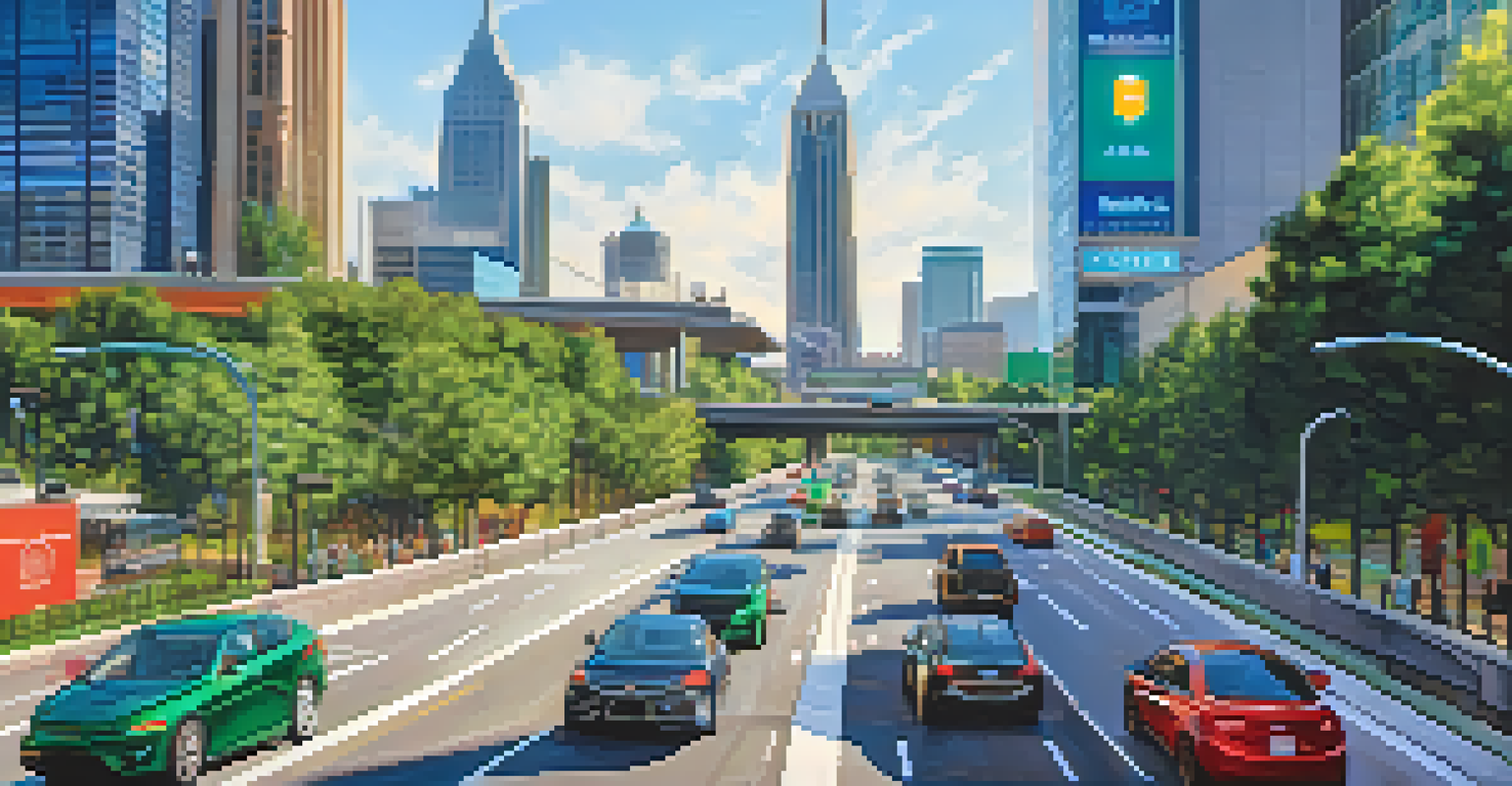The Evolution of Atlanta's Highway System: A Historical Overview

The Beginnings: Early Roads and Transportation in Atlanta
Before the highways we know today, Atlanta was shaped by dirt roads and railways. In the 19th century, these early pathways served as essential connections for commerce and travel, laying the groundwork for future expansion.
The road to success is dotted with many tempting parking spaces.
As the city grew, so did the need for improved transportation. This demand prompted local leaders to advocate for better roads, leading to the establishment of more structured routes that eventually evolved into the highways we recognize today.
These early developments were crucial, not just for the city’s growth, but also for integrating Atlanta into the larger network of transportation in the Southeast. The groundwork was laid for what would become a complex highway system.
The Rise of the Interstate System in the 1950s
The 1950s marked a significant turning point with the introduction of the Interstate Highway System. This federal initiative aimed to create a nationwide network of high-speed roads, and Atlanta quickly became a key player in this expansion.

Interstate 75 and Interstate 85, which traverse the city, were among the first major highways constructed. These routes not only facilitated local travel but also connected Atlanta to other major cities, boosting trade and tourism.
Atlanta's Transportation Evolution
Atlanta's transportation system has transformed from early dirt roads and railways to a complex network of highways that shaped the city's growth.
The impact was immediate and profound. Traffic volumes surged, reshaping the landscape of Atlanta and influencing its development patterns, as businesses and neighborhoods sprang up along these vital corridors.
The Ongoing Expansion: 1960s to 1980s
As Atlanta continued to grow, so did its highway system. The 1960s and 1970s saw significant expansions, with new interstates and bypasses constructed to accommodate the ever-increasing traffic demands.
Transportation is the backbone of our economy and a major part of our quality of life.
Highway 285, also known as the Perimeter, was completed in the late 1970s, creating a loop around the city. This expansion not only improved traffic flow but also spurred suburban development, altering the way Atlanta’s residents lived and commuted.
However, this period also brought challenges, including traffic congestion and environmental concerns. As more cars hit the roads, the need for sustainable solutions began to emerge.
The 1990s: Addressing Traffic Congestion
By the 1990s, Atlanta had earned a reputation for its traffic congestion, prompting local leaders to take action. Innovative transportation solutions were sought to ease the burden on the highway system.
The introduction of HOV (High Occupancy Vehicle) lanes was one such solution, encouraging carpooling and reducing the number of vehicles on the road. This initiative aimed to promote more efficient use of existing roadways.
Interstate System Impact
The introduction of the Interstate Highway System in the 1950s significantly boosted Atlanta's connectivity and economic development.
Additionally, investments in public transit, including MARTA, were made to provide alternatives to highway travel. These changes marked a shift in how the city approached transportation, recognizing the need for a balanced system.
The 21st Century: Smart Technology and Future Plans
Entering the 21st century, Atlanta's highway system faced new challenges, including increased population and evolving technology. Smart traffic management systems began to be implemented, using real-time data to improve traffic flow.
Innovations like adaptive traffic signals and digital signage became part of the landscape, helping drivers make informed decisions about their routes. This technology aimed to reduce congestion and enhance overall safety on the highways.
Looking ahead, plans for expanding public transit and integrating more sustainable practices are underway. The city's commitment to improving its transportation infrastructure reflects a broader understanding of the interconnectedness of urban planning and environmental stewardship.
Environmental Considerations and Urban Development
As Atlanta's highway system evolved, so too did awareness of its environmental impact. The construction and expansion of highways often led to urban sprawl, affecting local ecosystems and communities.
In response, city planners began incorporating green spaces and promoting sustainable development. This approach aimed to balance the needs of transportation with the preservation of Atlanta’s natural beauty.
Focus on Sustainability
Recent efforts in Atlanta emphasize sustainable transportation solutions to address environmental concerns and urban sprawl.
Efforts to reduce emissions and promote public transit options are now at the forefront of discussions about the future of the highway system. These initiatives reflect a growing recognition of the importance of sustainability in urban planning.
The Future of Atlanta's Highway System: Challenges Ahead
Despite the advancements, Atlanta's highway system still faces significant challenges. Ongoing traffic congestion, infrastructure maintenance, and funding for future projects are pressing issues that require immediate attention.
Community engagement and public input are essential as city planners work to address these challenges. Finding solutions that consider the needs of all residents, including those in underserved communities, is vital for a balanced approach.

The future of Atlanta’s highway system will depend on innovative thinking and collaboration among stakeholders. By embracing change and prioritizing sustainability, Atlanta can navigate these challenges and continue to thrive as a major transportation hub.